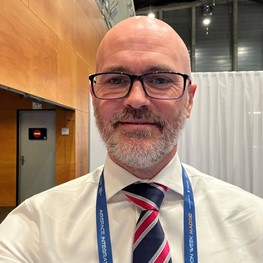A year ago, Virgin Orbit was preparing for its first-ever space launch from Newquay’s Spaceport Cornwall.
There was a whirlwind of activity ongoing at the UK Civil Aviation Authority to enable the launch to go ahead as planned. As the UK’s aviation and aerospace regulator, there is far more work that goes into space launches than one initially thinks.
From the licencing of the spaceport to the regulations around the launch and the satellites themselves, through to the enormous task of coordinating the airspace space operations launch into.
Our role is to plan for how to manage airspace during space operations, so that they are done safely and efficiently. This can include looking at creating Temporary Danger Areas, how long to keep parts of airspace closed for, and assessing risks as the launches increase in altitude.
We also collaborate with our international neighbours on the use of their airspace, since most launches won’t just affect the UK airspace, but that of other countries too.
Before launch, our Space and Airspace Regulation teams worked closely to make sure that all elements, from licencing to airspace management, were completed in tandem and didn’t contradict each other’s work.
A year on, its impact endures and continues to shape the work we do on other UK space activities, with the Virgin Orbit launch providing us some valuable lessons to learn from.

A Safe Launch
The initial and foremost point of reflection must be that, despite Launcher One not completing its mission, the Virgin Orbit launch can be regarded as a success in regard to airspace management.
The launch was executed safely, and the resulting impacts on airspace and movement of aircraft were minimized, thanks to exceptional collaboration among four nations – the UK, Ireland, Spain, and Portugal.
This co-operation extended across five regions of airspace in which a flight information service is provided, under the control of a single authority (known as Flight Information Regions) and involved multiple organisations within each country.
This included multiple aviation and maritime regulators, air navigation service providers, and government departments all coming together to achieve the ambitious goal of conducting the UK’s first orbital launch. This collaboration meant that a rocket was safely launched through one of the busiest areas of air traffic in the world.
Collaboration
Collaboration is pivotal to ensuring that the UK and Europe can enhance the frequency of space launches and nurture a thriving industry. The level of teamwork, time, and effort required to accomplish the Virgin Orbit launch drew in individuals from across Europe for many months.
From this we were able to learn helpful lessons from doing this work for the first time at this scale, and we will take these learnings to help us deliver more launches, more efficiently in the future as the industry, and demand, accelerates.
Looking ahead to 2024, the UK space sector is set for another transformative year. We’ve kicked it off with the licensing of the UK’s first vertical lift-off spaceport, and are now working closely with rocket companies that will see the first launches of their kind from Scotland.
The period ahead promises to be both challenging and exhilarating. By working together, we can make successful launches a regular occurrence with minimal impacts to those on the ground.
The sky used to be the limit – but not anymore!



Leave a comment
Fields marked with an asterisk (*) are required.